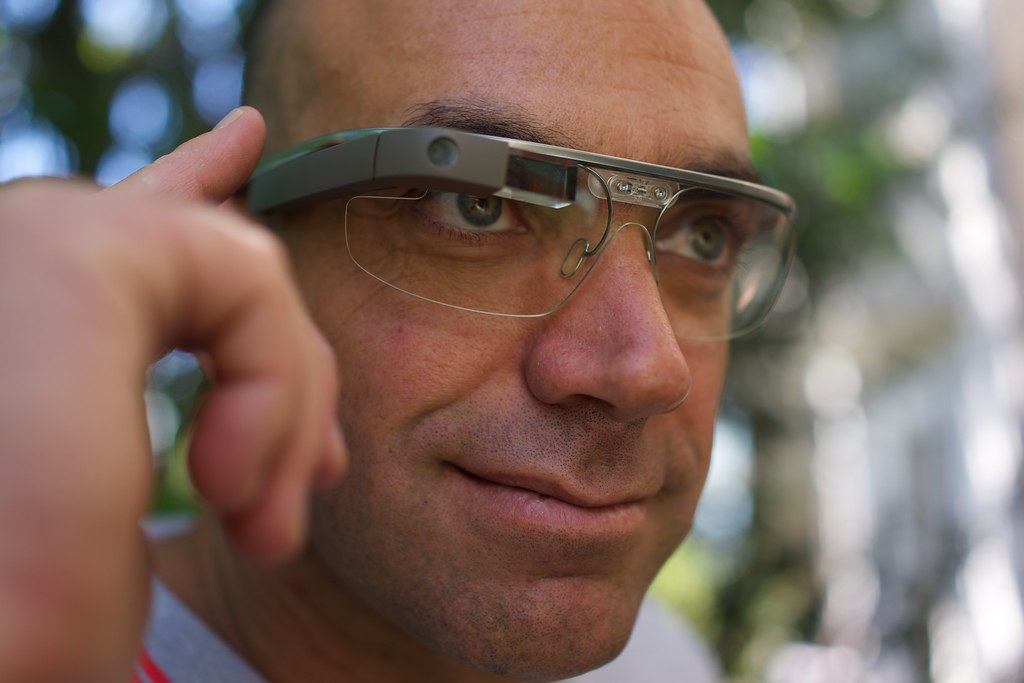
With Christmas just around the corner, the large voice assistant providers – Amazon’s Alexa, Google Assistant, Samsung’s Bixby, Apple’s Siri and Microsoft’s Cortana – are licking their lips at the opportunity to establish themselves in even more homes across a greater number of devices. A recent government report estimates that voice assistants are in at least one in 5 homes in the UK. This approximation is probably on the conservative side.
Most people are aware of Amazon’s Echo smart speaker and Google Home. However, voice assistants are popping up in more unexpected places. From smart toilets to interactive voice enabled cars, we take a look at the weirdest and most wonderful places you can find voice assistants.
Glasses: Seeing is the New Hearing

You might remember Google Glass, the smart glasses launched by Google in 2013. Their moment of virality was short-lived, as the expensive AR glasses failed to appeal to the mass market. They were instead confined to a dedicated cult following dubbed the “Glassholes”, who still extol the virtues of Google Glass to this day.
Fast forward 6 years and Google’s biggest adversary – Amazon – has usurped this piece of wearable tech. The EchoFrames were announced in September 2019. They clearly make a move away from the AR of Google Glass. Instead, they promote the utilisation of their famed voice assistant Alexa.
The EchoFrames focus on audio (rather than visual) enhancements, allowing hands-free access to Alexa. In Amazon’s words, they enable users to “make calls, set reminders, add to your to-do lists, listen to podcasts, or control your smart home from anywhere”. The glasses use “open-ear” technology. This alleges a good audio quality for the listener, while ensuring those around you won’t be able to eavesdrop.
At this stage, the EchoFrames are not available to the mass market. However, in 2020, the EchoFrames could go some way to normalising the everyday use of voice assistants, by planting it right on top of your nose.
Vacuum Cleaners: Bringing Henry to Life
If you’re imagining a Roomba that can talk, you’re not too far off. Roomba’s iRobot model is just one member of the growing army of voice assisted hoovers getting prepped for world domination. Samsung, Neato and Shark have also ventured into the creation of smart vacuum, to varying degrees of success.
The use of voice technology with vacuum cleaners is pretty rudimentary and is largely limited to start/stop functionality, as demonstrated in the promo video below:
To be frank, it’s not the most sophisticated implementation of voice assistant. However, it’s pretty handy, ultimately serving the larger purpose for Amazon, Google and Samsung. That larger purpose being that these brands are trying to create a voice ecosystem which their customers buy into.
Smart TVs: Saying Goodbye to the Remote Control
While the Smart TV revolution continues to burgeon, consumers are now seeing the advent of voice enabled Smart TVs. The key feature of voice assistant when used with a television, is to eliminate the need for a remote control.
Samsung’s Bixby and LG’s ThinQ both offer own-brand voice assistants that offer comprehensive controls. This ranges from searching for content, to volume control, opening apps and setting sleep timers. However, the likes of Sony have also ensured compatibility with Alexa and Google Assistant for basic functions, but this requires the smart speaker of the respective brand.
Users of voice enabled Smart TVs have noted that the built-in voice controls are far from perfect – still struggling to always process different accents. Further, massive apps like Netflix block voice commands, rendering them useless with such platforms. So, it may not be time to lose the remote down the back of the sofa forever, but as voice assistants continue to improve, the future of the remote is looking bleak.
Toilets: Flushing in Style
I know what you’re thinking. A talking toilet – is that really necessary?! While the answer to that question is almost certainly no, Kohler’s answer is “why not?”. Their Numi 2.0 is bringing features you didn’t even know you needed. Kohler’s “most advanced toilet” allows users to “fine-tune every aspect of their experience to their exact preference”, from a choice of ambient coloured lights a heated seat and foot warmer. It also comes with built-in Bluetooth so you can play a different kind of trumpet when doing your business.
The relevance of Numi 2.0 here is its Amazon Alexa integration. The built-in voice controls essentially turns the toilet into a giant smart speaker, allowing users to utilise all the regular Alexa functions – from checking the news to ordering some fresh loo roll.
The Numi 2.0 was announced as part of Kohler’s connected bathroom, which also includes a smart bathtub, smart shower and smart mirror.
Cars – All Roads Lead to Voice

According to Voicebot.ai, nearly double the number of adults in the USA have used voice assistants in their car (114 million) when compared to smart speaker use (57.8 million). Voice experiences have proved particularly popular in the automotive industry due, obviously, to the hands-free nature of the technology.
However, voice in cars goes beyond the usual tasks of dial assist and navigational guidance. Users are using assistance for a variety of tasks, from playing music to recommendations of where to eat and even dictating text messages. Further, there is an opportunity of connectivity between the car and the smart home, allowing users to control their lighting or open the garage door for their return.
All major luxury car manufacturers are installing voice assistants in their models. It is seemingly just a matter of time until we see this tech trickle down to more affordable vehicles.
Conclusions – Everything the light touches is voices’ kingdom
The major players in the voice industry are striving to make voice a part of everyday life. First and foremost, they do this by massively discounting their smart speakers and voice hardware so that it is affordable. However, they are also implementing voice wherever and whenever technologically possible. With huge brands putting their chips on voice, it appears that sky’s the limit right now. Voice is far from perfect, but it’s here to stay. Whether you like it or not, 2020 looks set to be a big year for voice. The only question left now, is where will we see voice assistants next?





